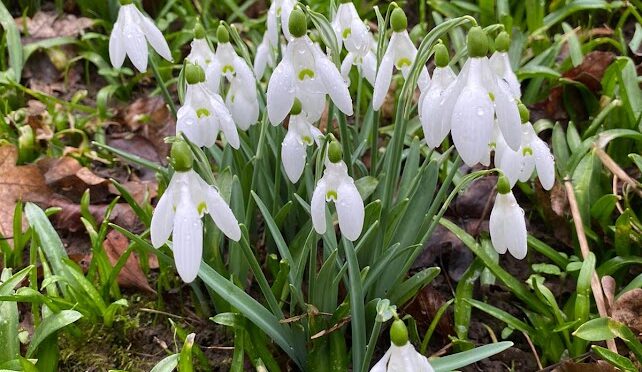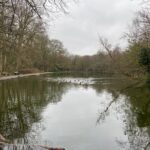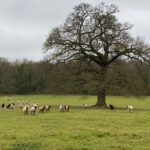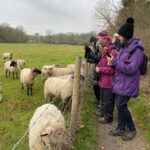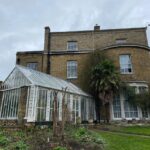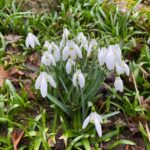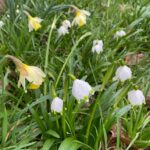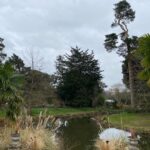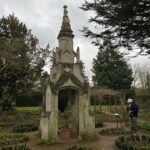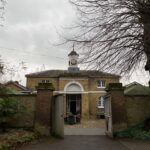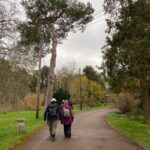The day started with the first rain in a month but stayed dry during our walk for lovers of snowdrops. Nine Poly Ramblers met at Crews Hill station and headed to Whitewebbs Wood. We followed the northern edge of this ancient woodland and came to the Whitewebbs golf course which has been closed by Enfield Council, but is enjoyed by local walkers – for the time being. Then we walked – still in the wood – between two enclosures: one which is the large training ground of Tottenham Hotspur (who want to lease part of the wood and the old golf course to enlarge their training ground with much opposition from the locals) and an area which is being developed as a beaver sanctuary. We came out of the wood to fields where curious sheep ran towards us probably thinking we had food for them but walked away very disappointed. After continuing on a muddy path, we arrived at Myddelton House Gardens.
We had lunch in the café, had a look at the small museum and went for a tour of the gardens. Myddelton House was built around 1812-1818 by Henry Carrington Bowles and named after Sir Hugh Myddelton the engineer who created the New River. The house passed through the Bowles family and was inherited by Edward Augustus Bowles who became one of the great self-taught gardeners of the 20th century. He was an expert on many plants, particularly crocuses, and was subsequently named “The Crocus King”. But we were there for the snowdrops, and they were everywhere as well as crocuses and daffodils. E A Bowles was an avid recycler, and the gardens contain bits of London that no one else wanted such as parts of old London Bridge, rubble from the construction of the Victoria line, the old Enfield Market Cross, paving stones from Clerkenwell and medieval shots. The gardens are lovely and very interesting. Go there at any time of the year; entrance is free, and they are only 0.6 miles from Turkey Street Overground Station.
After visiting the gardens, we entered Forty Hall Country Park and followed Turkey Brook, passing fishponds, thought to be created by Henry VIII to provide freshwater fish to the Palace of Elsyng. It was a medieval manor (whose remains now lie beneath the ground of the estate) and former home of Henry VIII and Queen Elizabeth I. We followed Turkey Brook to Beggars Hollow where we stopped in the café for a cup of tea. We then followed the course of Cuffley Brook and entered Whitewebbs Wood once again. We passed Flash Lane aqueduct built in 1820 to carry the New River over Cuffley Brook. Its purpose was to shorten the route of the New River, but by 1850 the aqueduct was redundant. The remains of the cast iron ‘flash’ were excavated by the Enfield Archaeological Society in 1968 and repaired in 2010. We continued through the wood and came out on Whitewebbs Road and walked to Crews Hill station passing the many garden centres which now replace the large area of glasshouses which used to serve the London market with cut flowers, pot plants and vegetables. Only 10 minutes wait for the train and the end of a successful first midweek walk.
Dominique

